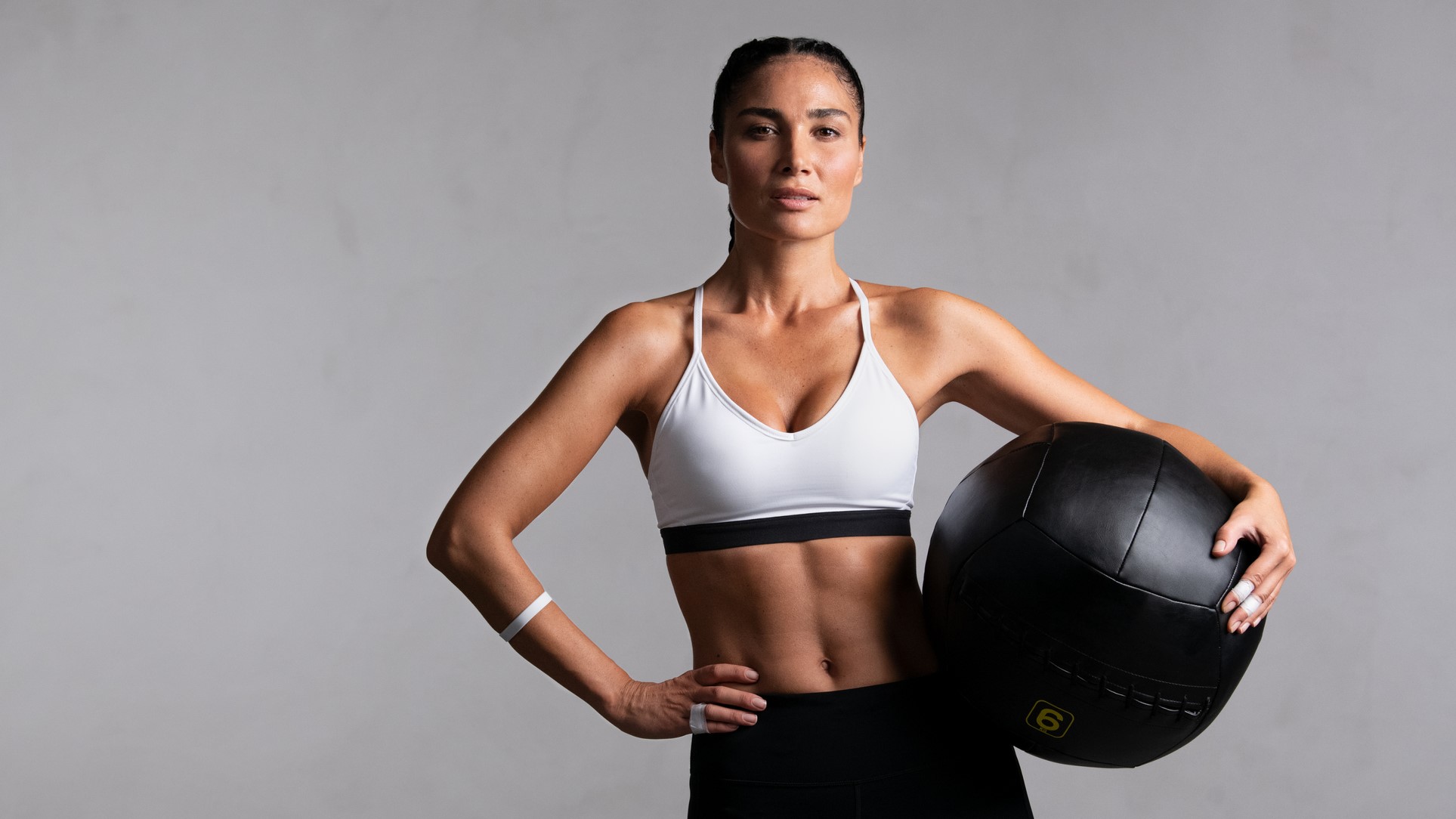I'm a personal trainer — 3 things I wish I had known about weightlifting in my 30s

When I first started weightlifting, I threw myself at weights like a seagull to a stray fry and had little knowledge about the best way to build strength or muscle. Over the years, I put in the time and qualified as a trainer, and I’ve been learning ever since.
As you hit your 30s, trust me, your needs change with your body — physically and mentally. Now, I approach my gym regime with precision and efficiency, getting rid of all the faff and fluff from my workouts and doing only what I know works.
If you’re new to weightlifting or heading into your 30s and want to know how to look after yourself properly when lifting, I can help. Here are three things I wish I’d known about weightlifting in my 30s, and how these tips could help you, too.
3 things I wish I had known about weightlifting in my 30s
1. Rest matters

As we hit our 30s, things start to change. That doesn’t mean your entire training plan goes out the window, but there are a few areas you might not have considered before: recovery might be a little slower, tiredness might increase, or maybe you’re noticing injuries that weren’t there before.
Recovery is a key component of building strength and muscle, and your body can’t do it without adequate time for muscle fibers to repair and rest. There’s a physiological and psychological aspect to training, and so too with recovery; both are key to any training plan, regardless of whether you prefer to build maximal strength, hone muscle, or a little bit of both.
We live in a world that rewards “Go, go, go,” which can increase the risk of overtraining and injury. You’re not slacking if you take a few days off during the week to rest, walk, or play. I now find these days far more enjoyable than turning up to a workout out of guilt.
The research shows that even one or two days of strength training can be enough to see gains, so don’t feel like you must train five, six, or seven days to see results. Even swapping a day or two of training for active recovery can help your body recover from your efforts.
Get instant access to breaking news, the hottest reviews, great deals and helpful tips.
We live in a world that rewards “Go, go, go,” which can increase the risk of overtraining and injury.
Burnout looks different on everyone, so read the subtle cues that signal burnout for you. You can’t put in 100% if you’re turning up at 50%, so I always tell clients to look for increased muscle soreness, fatigue, or mood changes.
One of the best fitness trackers can detect when your body is under stress and help you assess how to recover better. Remember, stress manifests in many ways, and it can actually plateau your workouts, so it’s well worth checking in each day.
Rest days look different depending on your lifestyle and gym efforts, and it will come down to the type of training you do. As a guideline, beginners might need three to four days of rest per week, resting muscle groups for 24 to 48 hours. For those more experienced or prioritizing lower-impact workouts, one or two days might be enough.
For heavy weightlifting and higher-intensity workouts, like CrossFit, you might need to be more strategic if you want to train on most days. Want to know more? Here's the number of rest days you really need in your exercise routine.
2. You can work out less and see better results

It’s good news if you want to work out less and see better results — something I wish I knew when I was hammering myself in the gym using the bro split seven days a week.
A study found that more efficient, direct and intense workouts with heavier weights could be more effective for muscle growth than lighter weights, higher rep counts, or longer gym stints. In short, consider adding load and working to near failure with reps, focusing on just two to three sessions per week and “focused” efforts. Yep, forget tons of sets, reps, or exercises; even four to six exercises are enough per session.
The study above recommends two to three sessions per week, and I agree that you don’t need to be in the gym much more than that to build serious strength and muscle mass. Keep it simple and read my guide on strength training and hypertrophy principles to help you plan your sessions effectively.
Think shorter, more intentional workouts and really putting the intensity in when you’re there — and you could be there less.
3. Creatine is king

As we age, even as early as our 30s, muscle atrophy can occur and metabolic speed can decline. That means as we get older, we’re looking to either build or maintain muscle mass (or both) and keep fat mass at a healthy level. Lean muscle is more metabolically active than fat, so the more we can keep, the better for the metabolism.
Although osteoporosis is typically associated with “older people” or health conditions, keeping your bones, joints and ligaments strong through resistance training should also be a priority at any age to prevent issues later in life.
Nutritionists, doctors and dietitians might be able to recommend supplements to support a healthy and balanced diet and exercise routine if muscle repair and bone strength are important to you, but as a personal trainer, I’m not qualified to do that. However, one tip I will give any gym-goer looking to make gains in the gym is this: creatine.

To put the record straight, creatine isn’t the same as a pre-workout, although many pre’s will contain it. Your body naturally produces the compound creatine from amino acids, and most of it is stored in muscle cells (and some in the brain) as phosphocreatine, contributing toward energy production.
Bodybuilders, gym-goers and athletes may take creatine to boost performance and increase strength and muscle mass over time. Increasing your phosphocreatine stores helps you replenish ATP (your body’s energy currency for producing muscular contractions), topping up the supply of energy to muscles, so you can perform for longer, stay alert and increase your output.
Research supports the use of creatine. The Journal of the International Society of Sports Nutrition suggests you can make gains in lean muscle mass and power by taking creatine alongside lifting weights.
The creatine cycling approach involves taking a serving every day for a set time, then lowering the dose for maintenance and taking breaks around every six weeks. But you don’t have to “load” creatine to see benefits like enhanced muscular performance. Most brands recommend dosing just before or after a workout, but it's worth checking the guidelines and seeking advice before taking it if you're unsure.
Remember, creatine alone won't answer all your prayers; you'll also need to take into account the factors above, alongside a consistent exercise routine, a balanced diet containing plenty of protein and a sleep routine that allows you to feel energized.
Here's what happened when I took creatine every day for six weeks, if you're already thinking about adding creatine to your diet.
Follow Tom's Guide on Google News to get our up-to-date news, how-tos, and reviews in your feeds. Make sure to click the Follow button.
More from Tom's Guide
- Bedtime yoga routines
- A yoga teacher says these are the 'big 3 movements' you should be doing to unlock tight hips and increase mobility as you age
- This one bodyweight exercise strengthens your upper body and core without weights — and no, it’s not regular push-ups or planks

Sam Hopes is a level 3 qualified trainer, a level 2 Reiki practitioner and fitness editor at Tom's Guide. She is also currently undertaking her Yoga For Athletes training course.
Sam has written for various fitness brands and websites over the years and has experience across brands at Future, such as Live Science, Fit&Well, Coach, and T3.
Having coached at fitness studios like F45 and Virgin Active and personal trained, Sam now primarily teaches outdoor bootcamps, bodyweight, calisthenics and kettlebells.
She also coaches mobility and flexibility classes several times a week and believes that true strength comes from a holistic approach to training your body.
Sam has completed two mixed doubles Hyrox competitions in London and the Netherlands and finished her first doubles attempt in 1:11.
You must confirm your public display name before commenting
Please logout and then login again, you will then be prompted to enter your display name.
